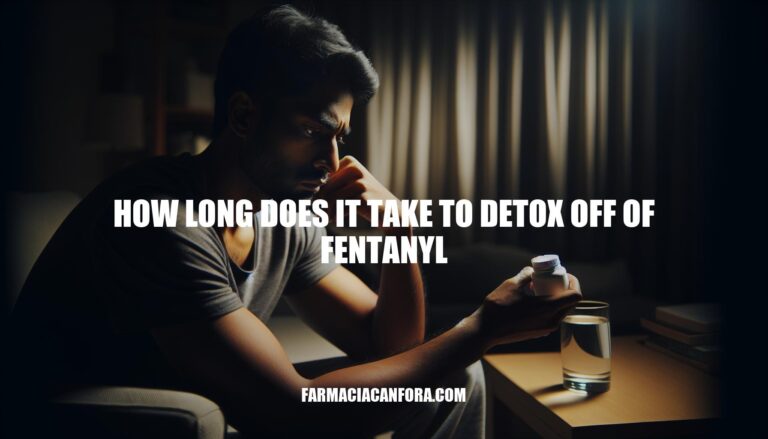


Detoxing off fentanyl, a potent synthetic opioid, typically takes about 7 to 10 days, with withdrawal symptoms peaking around 36 to 72 hours after the last dose. However, the exact timeline can vary based on factors like the duration and amount of fentanyl use.
Understanding the detox timeline is crucial for individuals seeking recovery, as it helps them prepare for the physical and emotional challenges ahead. Knowing what to expect can reduce anxiety and encourage individuals to seek medical support, which can significantly improve the chances of a successful recovery.
Detoxing from fentanyl can vary significantly based on several factors:
Usage History: The length of time someone has been using fentanyl plays a crucial role. Long-term users often experience more prolonged and severe withdrawal symptoms.
Dosage: Higher doses of fentanyl can lead to more intense withdrawal symptoms and a longer detox period.
Overall Health: An individual’s general health, including liver and kidney function, can impact how quickly fentanyl is metabolized and eliminated from the body. Poor health can slow down the detox process.
Frequency of Use: Frequent use can lead to higher tolerance and dependence, making detox more challenging.
Method of Administration: How fentanyl is taken (e.g., orally, intravenously) can affect the severity and duration of withdrawal.
Concurrent Substance Use: Using other substances alongside fentanyl can complicate and prolong the detox process.
Each person’s experience with fentanyl detox is unique, influenced by these and other factors. Seeking medical supervision during detox can help manage symptoms and ensure safety.
Here’s a detailed timeline for detoxing off fentanyl:
Withdrawal symptoms can include nausea, vomiting, diarrhea, muscle and bone pain, insomnia, anxiety, sweating, chills, and increased heart rate.
Detoxing from fentanyl can be extremely challenging, both physically and psychologically. Here are some common symptoms:
Physical Challenges:
Psychological Challenges:
These symptoms can be severe and uncomfortable, often requiring medical supervision to manage safely.
Medical assistance plays a crucial role in managing the detox process off of fentanyl by providing medications to ease withdrawal symptoms and monitoring for complications. This helps ensure the safety and comfort of individuals undergoing detox.
Benefits of supervised detox programs include:
Detoxing from fentanyl typically takes 7-10 days, with withdrawal symptoms peaking around 36-72 hours after the last dose. However, the exact timeline varies based on factors like usage history, dosage, overall health, frequency of use, method of administration, and concurrent substance use.
Seeking medical supervision during detox is crucial for managing symptoms and ensuring safety. Medical assistance can provide medications to ease withdrawal symptoms, monitor for complications, and offer emotional support, reducing the risk of relapse.